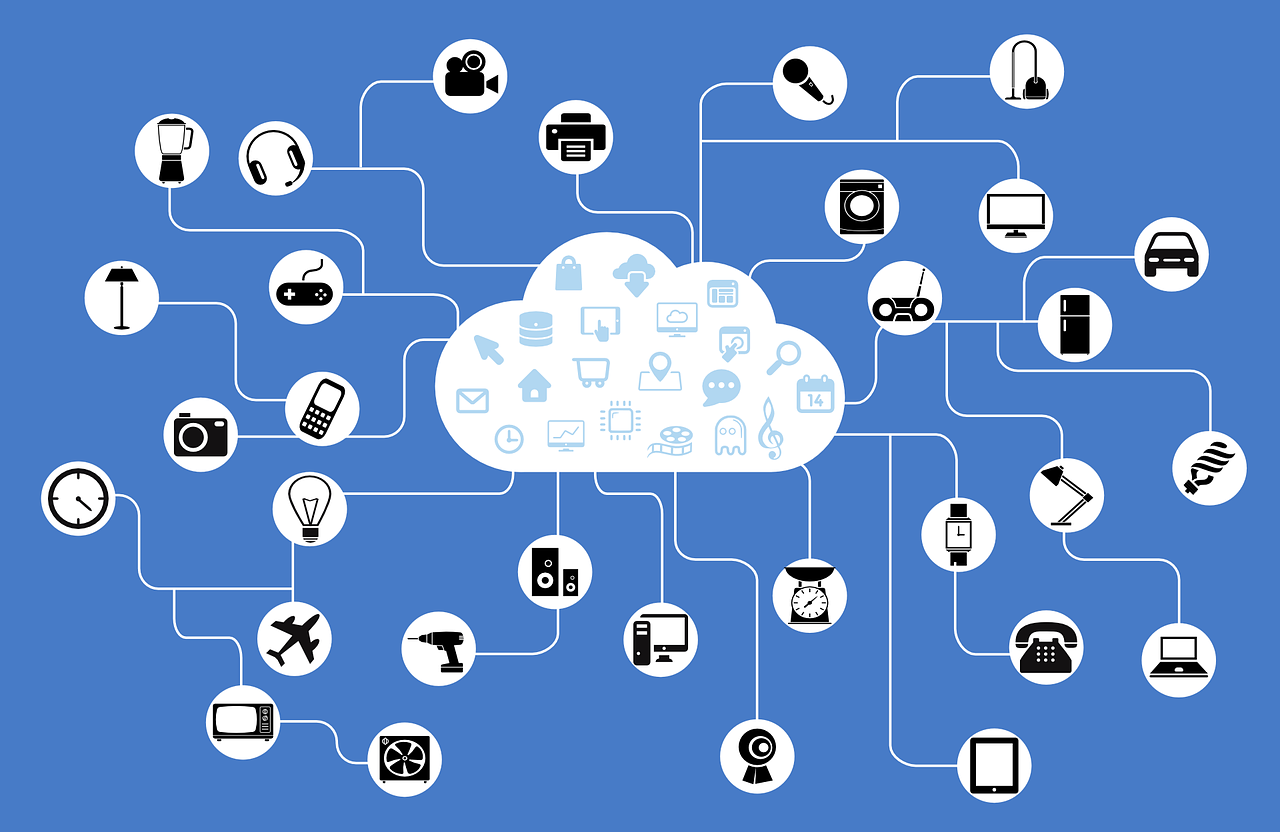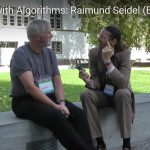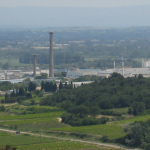A dictionary for connected devices
The field of connected devices is growing at a staggering pace across all industries. There is a growing need to develop a communication standard, meaning a ‘common language’ that different smart systems could understand and interpret. To contribute to this goal, ETSI (European Telecommunications Standards Institute) is funding a European project in which Mines Saint-Étienne researchers Maxime Lefrançois and Antoine Zimmermann[1] are taking part.
In order to work together, connected devices must be able to communicate with one another. This characteristic, known as ‘semantic interoperability,’ is one of the key challenges of the digital transition. To be effective, semantic interoperability must be based on the adoption of an agreed-upon set of best practices. This would culminate in the creation of a standard adopted by the IoT community. At the European level, ETSI (European Telecommunications Standards Institute) is in charge of setting standards for information and communication technologies. “For example, ETSI standardized the SIM card, which acts as an identifier in mobile phone networks to this day,” explains Maxime Lefrançois. He and his colleague Antoine Zimmermann are researchers at Mines Saint-Étienne and specialize in the semantic web and knowledge representation. They are taking part in the STF 578 project on the interoperability of connected devices funded by ETSI, in partnership two researchers from Universidad Politécnica de Madrid.
“Instead of proposing a standard that strictly defines the content of communications between connected devices, we define and formally identify the concepts involved, through what is known as an ontology,” says Antoine Zimmermann. This provides IoT players with greater flexibility since the content of messages exchanged may use the language and format best suited to the device, as long as an explicit link is made with the concept identified in the reference ontology. The two researchers are working on the SAREF reference ontology (Smart Applications Reference Ontology), a set of ETSI specifications which include a generic base and specializations for the various sectors related to the IoT: energy, environment, building, agriculture, smart cities, smart manufacturing, industry and manufacturing, water, automotive, e-health, wearables.
“The SAREF standard describes smart devices, their functions and the services they provide, as well as the various properties of the physical systems these devices can control,” explains Maxime Lefrançois. For example, a light bulb can say, “I can provide light” by using a concept defined by SAREF. A system or application may then refer to the same lighting concept to tell the object to turn on. “Ultimately, this knowledge should be described following the same standard models within each industry to facilitate harmonization between industries.” adds the researcher. The aim of the project is therefore to develop a public web portal for the standard SAREF ontology to facilitate its adoption by companies and collect their feedback and suggestions for improvement.
A specially-designed ‘dictionary’
“The SAREF public web portal is a little bit like a ‘dictionary’ for connected devices,” explains Maxime Lefrançois. “If we take the example of a water heater that can measure energy consumption and can be remotely-controlled, SAREF will describe its possible actions, the services it can provide, and how it can be used to lower energy costs or improve household comfort.” But his colleague Antoine Zimmermann explains, “It isn’t a dictionary in the traditional sense. SAREF specifies in particular the technical and IT-related constraints we may encounter when communicating with the water heater.”
Imagine if one day all water heaters and heat pumps were connected to the IoT and could be remotely controlled. They could then theoretically be used as an energy resource that could ensure the stability and energy efficiency of the country’s electricity grid. If, in addition, there was a uniform way to describe and communicate with these devices, companies in the smart building and energy sectors would waste less time individually integrating products made by different manufacturers. They could then focus instead on developing innovative services connected to their core business, giving them a competitive advantage. “The goal of semantic interoperability is to develop a service for a certain type of smart equipment, and then reuse this service for all similar types of equipment,” says Maxime Lefrançois. “That’s the heart of SAREF”.
Read more on I’MTech: How the SEAS project is redefining the energy market
At present, the existing standards are compartmentalized by sector. The energy industry has standards for describing and communicating with the electrical equipment of a water tower, but the water tower must then implement different standards to interface with other equipment in the water distribution network. “There are several different consortia for each sector,” explain the researchers, “but we now have to bridge the gap between these consortia, in order to harmonize their standards.” Thus the need for a ‘dictionary,’ a common vocabulary that can be used by connected devices in all industries.
Take the example of automotive manufacturers who are developing new batteries for electric vehicles. Such batteries could theoretically be used by energy suppliers to regulate the voltage and frequency of the electricity grid. “The automotive and energy industries are two sectors that had absolutely no need to communicate until now,” says Maxime Lefrançois, “in the future, they may have to work together to develop a common language, and SAREF could be the solution.”
A multilingual ‘dictionary’
The IoT community is currently engaged in something of a ‘standards war’ in which everyone is developing their own specification and hoping that it will become the standard. Impetus from public authorities is therefore needed to channel the existing initiatives — SAREF at the European level. “We can well imagine that in the future, there will only be a single, shared vocabulary for everyone,” says Antoine Zimmermann. “But we may find ourselves with different vocabularies being developed at the same time, which then remain. That would be problematic. This is how it is today, for example, with electrical outlets. A machine intended to be used in the United States will not work with European outlets and vice versa.”
“The development of the SAREF public web portal is an important step since it encourages companies to take part in creating this dictionary,” adds Maxime Lefrançois. The more companies are involved in the project, the more comprehensive and competitive it will be. “The value of a standard is related to the size of the community that adopts it,” he says.
“The semantic web is particularly useful in this respect,” says Antoine Zimmermann, “it allows everyone to agree. Companies are all engaged in digital transformation and use the web as a common platform to get in touch with clients and partners. They use the same protocols. We think the semantic web is also a good way to build these common vocabularies that will work in various sectors. We aren’t looking for the right solution, but to demonstrate best practices and make them more widespread so that companies look beyond their own community.”
A collaborative ‘dictionary’
The researchers’ work also involves developing a methodology for building this standard: a company must be able to suggest a new addition to the vocabulary that is highly specific to a certain field, while ensuring that this contribution aligns with the standard models and best practices that have been established for the entire ‘dictionary.’
“And that’s the tricky part,” says Maxime Lefrançois. How can the SAREF public portal be improved and updated to make sure that companies use it? “We know how to write ‘dictionaries’ but supporting companies is no simple task.” Because there are a number of constraints involved: all these different vocabularies and jargons must be assimilated, and companies may not necessarily be familiar with them.
“So we have to reinvent collaborative support methods for this dictionary. That’s where DevOps approaches implemented for software development are useful,” he says. These approaches make it possible to automatically check the suggestions based on a set of quality criteria, then automatically make a new version of the portal available online if the criteria are fulfilled. “The goal is to shorten SAREF development cycles while maintaining an optimal level of quality,” concludes the researcher.
There are other hurdles to overcome to get the connected devices themselves to ‘speak SAREF,’ due to the specific limitations of connected devices – limited storage and computing capacity, low battery life, limited bandwidth, intermittent connectivity. The use of ontologies for communication and ‘reasoning’ was first thought up without these constraints, and must be reinvented for these types of ‘edge computing’ configurations. These issues will be explored in the upcoming ANR CoSWoT project (Constrained Semantic Web of Things) which will include researchers from LIRIS, Mines Saint-Étienne, INRAE (merger of INRA and IRSTEA), Université Jean-Monnet and the company Mondeca.
[1] Maxime Lefrançois and Antoine Zimmermann are researchers at the Laboratory Hubert Curien, a joint research unit between CNRS/Mines Saint-Étienne/Université Jean Monnet.





Leave a Reply
Want to join the discussion?Feel free to contribute!